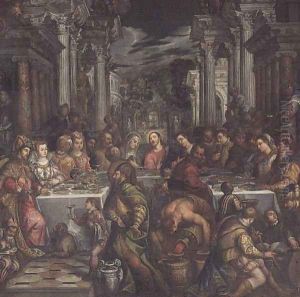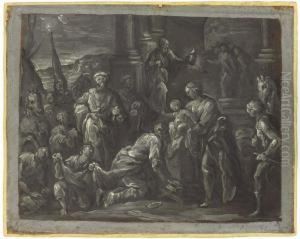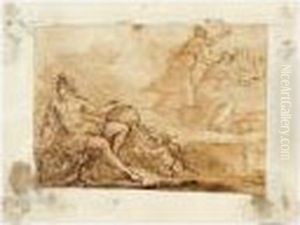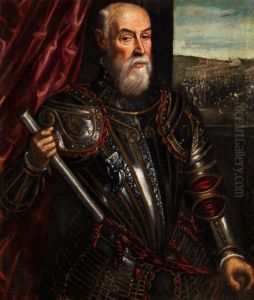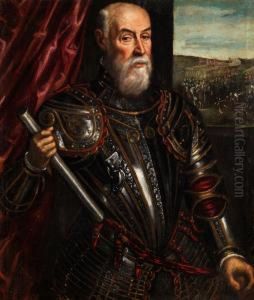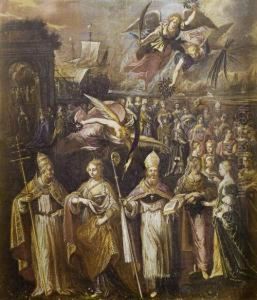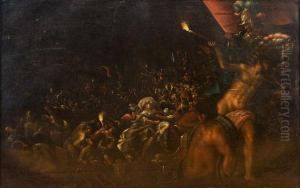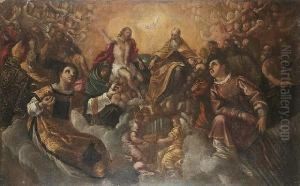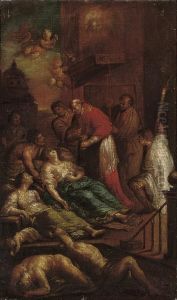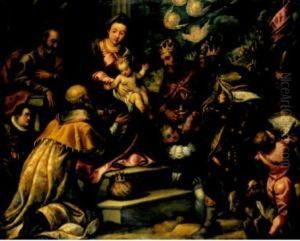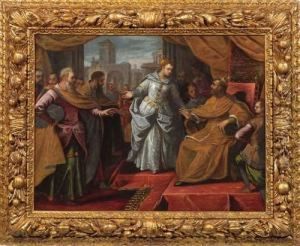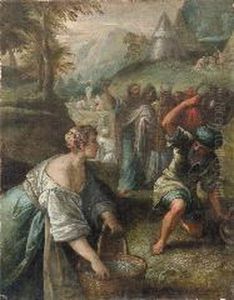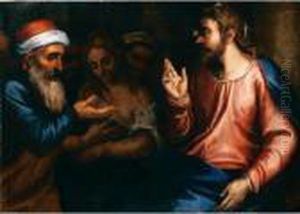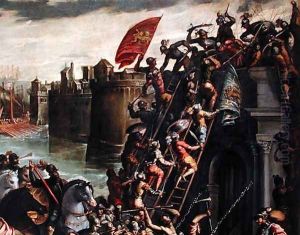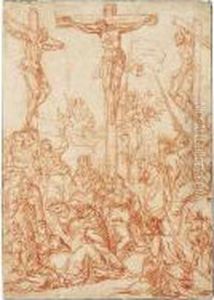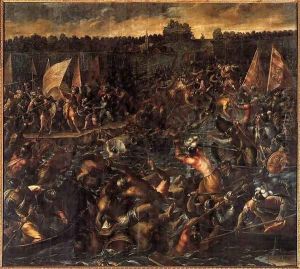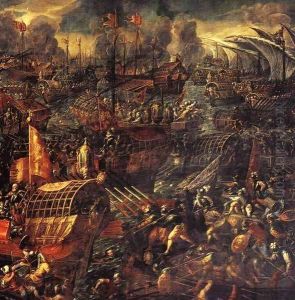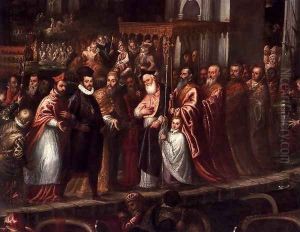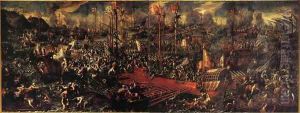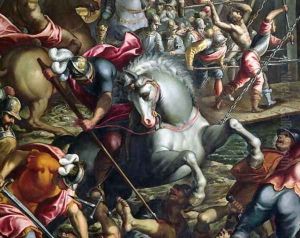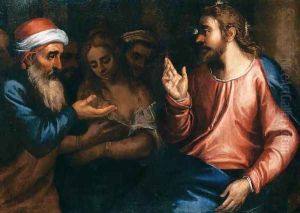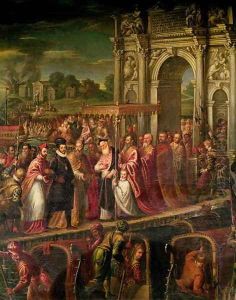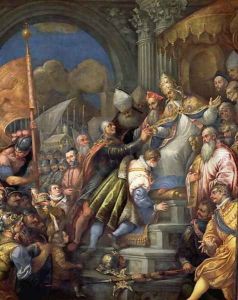Andrea Michieli (see Vicentino) Paintings
Andrea Michieli, also known as Andrea Vicentino or simply Vicentino, was an Italian painter of the late Renaissance period, active mainly in Venice and the Veneto. He was born in 1542 in Venice, Italy, and is often confused with the later Venetian artist Andrea Micheli, called Vicentino, who was active in the 17th century.
Vicentino's work was influenced by the Venetian School, particularly by the likes of Titian and Paolo Veronese. His style is characterized by his vibrant color palette and dynamic compositions, which reflect the transition from the Mannerist style to the more naturalistic approach of the Baroque period.
During his career, Vicentino worked on various religious and historical paintings. He is known for his large-scale works, including altarpieces and frescoes in churches and public buildings. One of his most famous works is the 'Battle of Lepanto', painted for the Doge's Palace in Venice. This painting commemorates the victory of the Holy League's fleet, led by the Venetian Republic, over the Ottoman Empire in 1571.
Vicentino's other notable works include 'The Miracle of the Relic of the Cross at the Bridge of S. Lorenzo' and his contributions to the decoration of the Library of San Marco in Venice.
Despite his contributions to the Venetian art scene, Andrea Michieli Vicentino has not been as widely recognized as some of his contemporaries. Nevertheless, his work provides a valuable insight into the evolving artistic tendencies of his time, bridging the gap between the High Renaissance and the emergence of Baroque art.
Andrea Michieli Vicentino's death is recorded as having occurred in 1617. His legacy, though somewhat overshadowed by the most prominent masters of Venetian painting, remains preserved in the art-historical record and in the collections of various museums and churches across Italy.
